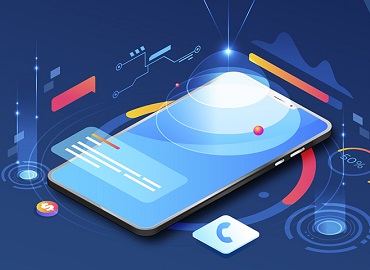Exploring Android and Python Frameworks: A Fusion of Mobile and Web Development
By Niladri Das
Introduction
In the dynamic landscape of software development, the synergy between Android and Python frameworks opens up new possibilities for building versatile and powerful applications. From mobile apps to web services, developers have access to an extensive toolkit that streamlines development, enhances performance, and fosters innovation. Let's delve into the key frameworks shaping this fusion:
Android Frameworks:
1. Android Jetpack:
Android Jetpack remains a cornerstone for Android development, offering a comprehensive set of libraries and tools to accelerate app development. From managing UI components to handling lifecycle events and navigation, Jetpack simplifies complex tasks and promotes best practices, ensuring robust and scalable apps.
2. Flutter:
Flutter, backed by Google, stands out as a cross-platform framework for building natively compiled applications with expressive UIs. Its hot reload feature facilitates rapid iteration, while its widget-based architecture enables developers to create visually stunning apps that perform consistently across platforms.
3. React Native:
Powered by Facebook, React Native enables developers to build cross-platform mobile apps using JavaScript and React. With its emphasis on reusable components and native performance, React Native streamlines development and ensures a native-like user experience on both Android and iOS platforms.
4. Kotlin:
As the official programming language for Android development, Kotlin offers modern syntax, null safety, and seamless interoperability with Java. Kotlin’s concise and expressive nature enhances developer productivity, while its robust type system helps reduce common programming errors, making it an ideal choice for Android development.
5. Retrofit:
Retrofit simplifies network communication in Android apps by providing a type-safe HTTP client with support for RESTful APIs. Its intuitive API and automatic serialization/deserialization of JSON responses streamline data parsing and network request handling, ensuring efficient and reliable communication with backend services.
6. Glide:
Glide emerges as a popular image loading and caching library for Android, offering features like automatic memory and disk caching, request prioritization, and animated GIF support. With its simple API and efficient resource management, Glide simplifies the process of displaying images in Android apps while ensuring optimal performance.
Python Frameworks:
1. Django:
Django stands as a high-level Python web framework that promotes rapid development and clean, pragmatic design. With built-in features like ORM, authentication, and admin interface, Django simplifies web application development, allowing developers to focus on building robust and scalable applications.
2. Flask:
Flask, a lightweight and flexible micro-framework for Python, provides essentials for web development with minimal dependencies. Its simplicity and extensibility make it a popular choice for building APIs, web services, and small to medium-sized web applications, offering developers the freedom to customize and tailor solutions to specific requirements.
3. FastAPI:
FastAPI represents a modern web framework for building APIs with Python, leveraging type annotations and asynchronous programming to achieve high performance and productivity. With automatic interactive API documentation and validation, FastAPI simplifies API development, making it a compelling choice for building scalable and efficient web services.
4. TensorFlow:
TensorFlow, developed by Google, is an open-source machine learning framework widely used for various tasks, including image recognition, natural language processing, and predictive analytics. Its flexibility, scalability, and extensive ecosystem of pre-trained models make TensorFlow a powerful tool for integrating machine learning capabilities into Python-based applications, including Android apps via TensorFlow Lite.
5. PyTorch:
PyTorch emerges as a popular deep learning framework known for its dynamic computation graph and intuitive API. With support for GPU acceleration and a rich ecosystem of libraries and tools, PyTorch enables developers to build and deploy deep learning models efficiently, opening up possibilities for integrating advanced AI capabilities into Android applications.
Conclusion:
The convergence of Android and Python frameworks heralds a new era of software development, empowering developers to build innovative and scalable applications across mobile and web platforms. By leveraging the strengths of these frameworks, developers can streamline development workflows, enhance performance, and deliver compelling user experiences that resonate with today’s diverse audiences. Whether it’s building a feature-rich Android app or a robust web service, the fusion of Android and Python frameworks offers limitless possibilities for driving innovation and shaping the future of software development.

